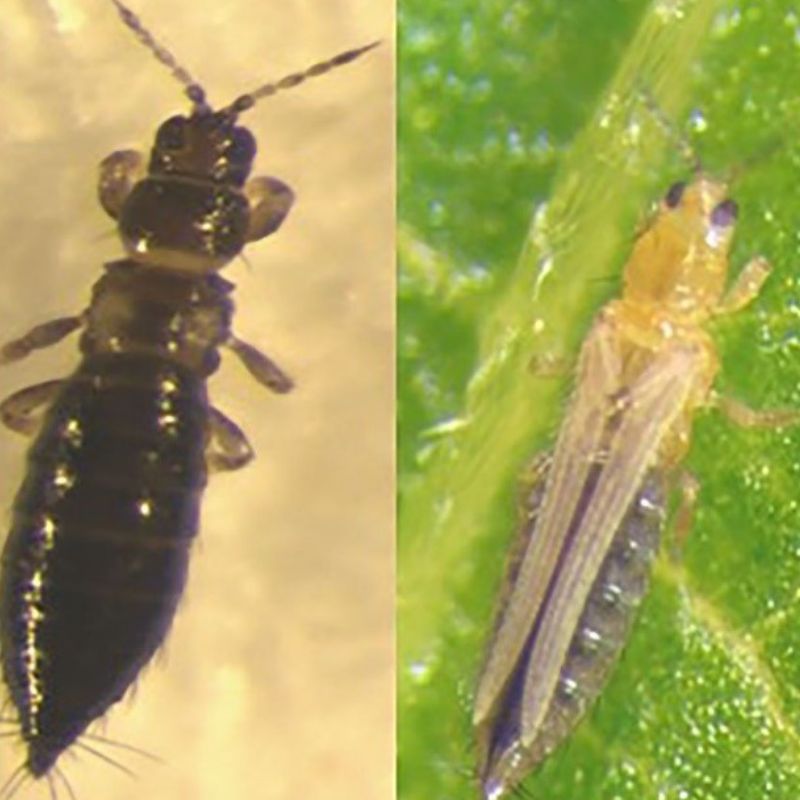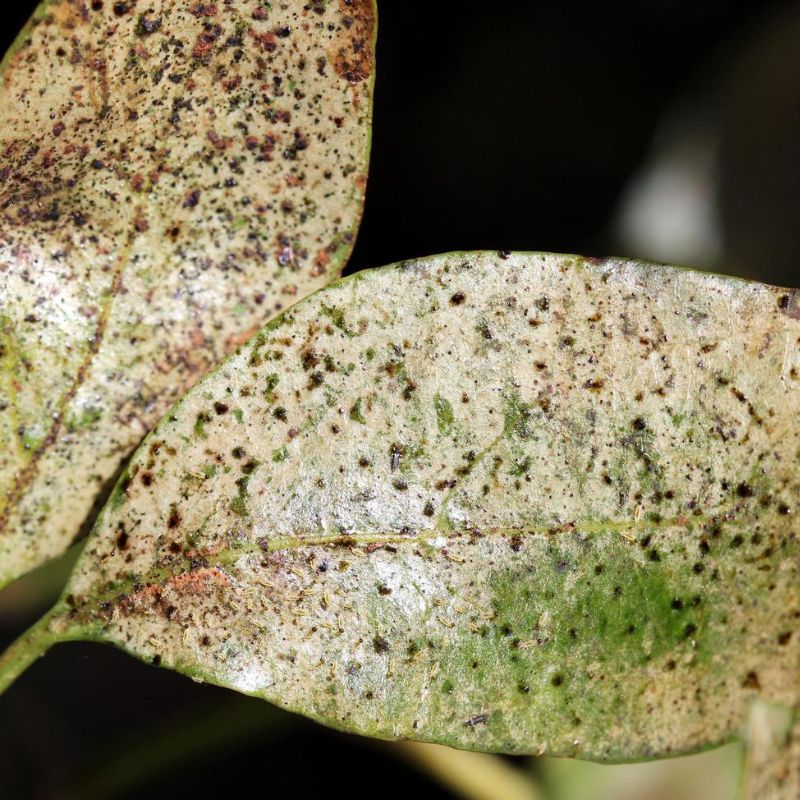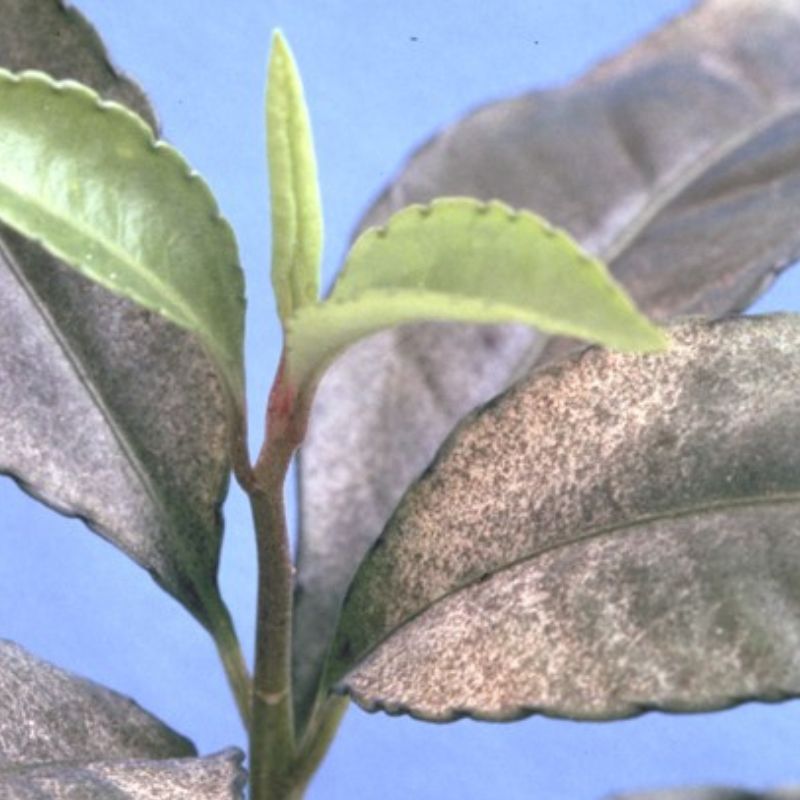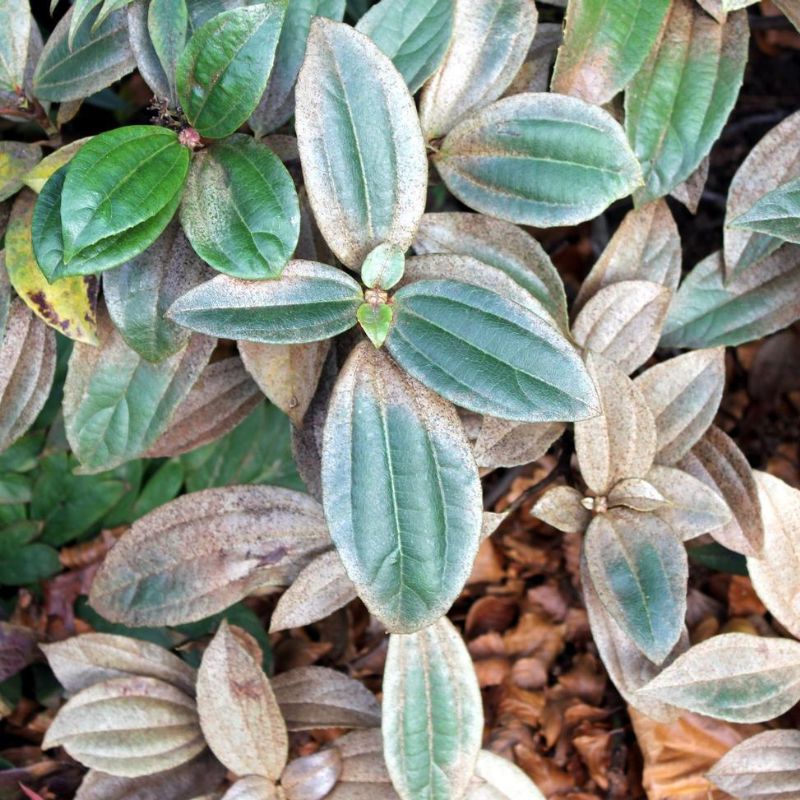Understanding and Managing Thrips
- Side-by-side comparison of thrip the black is the adult, the lighter one is the lavae just hatched.
- Close up of thrip infestation.
- Silver secretion appearing on the leaves
- Viburnum getting attacked by thrip
Thrips, scientifically known as Thysanoptera, are tiny dark-coloured insects that can cause significant damage to plants. Despite their small size, about 2mm in length, thrips can wreak havoc on various plants, including rhododendrons. Here’s a concise guide on how to identify, prevent, and manage these pesky insects.
Identifying Thrip Damage
Thrips hatch from eggs and transition to adults within 8 to 15 days. They feed by puncturing holes or scraping the underside of leaves and secreting a silver-gray substance, leading to a tell-tale silver or bronze appearance, especially on new growth. Infested plants often exhibit:
- Silvery or bronze discoloration on leaves
- Misshapen new foliage
- Visible tiny, dark-coloured insects on the underside of leaves
Thrips’ Ideal Conditions
Thrips thrive in warm, humid conditions, making late spring and early summer their prime breeding seasons. They prefer hot, dry summers and typically become active again around mid-October. Thrips are nocturnal and are usually wind-blown from plant to plant, infesting susceptible hosts in warm, humid conditions.
Preventing and Controlling Thrip Infestation
Prevention Tips:
- Maintain good airflow around plants
- Remove leaf litter where thrips might hibernate
- Mulch and water regularly to keep plants healthy and less susceptible to infestation
- Applying a systemic spray over the garden end of September beginning of October in the evening, has worked well at preventing thrips entering our garden.
Biological and Cultural Controls:
- Introduce natural predators like Hypoapsis mites and Neosiulus cucumens to control thrip larvae these can be purchased online and are sent in carboard tubes😊
- Use products like Neemazal and Pyrethrums as effective deterrents Neem pellets worked into the soil, is working as a great deterrent at present for many gardeners.
- Apply systemic and contact insecticides when necessary. Groventive or Cyrus (1ml per litre of water) are two systemics that we’ve had great success with.
Thrip Management Plan
- Spray in the evenings when thrips are most active.
- Repeat spraying every 10 days for three cycles to disrupt the thrips lifecycle.
- Employ Neem Oil bandaging by soaking crepe material in Neem Oil and wrapping it around the plant base to prevent thrips from reaching the foliage.
- Conduct preventative systemic sprays to keep sucking insects at bay, especially in areas prone to thrips infestation.
- Monitor plants regularly for signs of thrip activity and adjust control measures accordingly.
Learn More about Spraying
The spread of thrips can be slowed or stopped by picking or snipping off the worst-affected leaves if it’s a small plant, followed by two or three spray applications in quick succession, about 10 to 14 days apart.
- Always read the label first, particularly the instructions about dilution rates; and ask the supplier for any advice.
- Do not spray in hot or windy conditions; spraying in the early morning is often a good technique.
- Systemic sprays which are absorbed and circulate in the plant’s sap for a time are useful (examples are ‘Shield’, ‘Confidor’, ‘Spectrum’).
- Sprays which need to contact the insect directly (examples are ‘Super Shield’; and pyrethrum-based sprays and Neem Tree Oil) are also effective and include organic options. These contact formulations need to be sprayed up under the leaves and on the branches and trunk down to soil level as well, so as to coat the whole surface of the plant. NOTE: Make sure to use ‘Sprayfix’ or a teaspoon of dishwashing liquid in 5 litres in your mix. Without a mild detergent the spray forms ‘beads’ on the leaf surface; it needs to spread out with a larger surface area across the leaf surface to be most effective.
- Oils such as ‘Conqueror Oil’ are effective, and don’t need ‘Sprayfix’ or detergent to be added; as a contact spray they need to be directed up under the leaves as described. A dilution of 10 ml per litre is the usual recommendation; more oil in the mix can damage foliage, particularly in hot weather. Oil has relatively low toxicity but can mark building surfaces so avoid spraying walls or windows.
On larger or older rhododendron plants which have been badly affected by thrips or mites over summer, as a good start it is worth removing as many of the affected leaves as is practical, so that the plant at least looks more presentable. Then either spray is manageable, or consider using a tree health band as an alternative option (available from Oderings). Repeated contact sprays to cover all surfaces (including trunk and base of plant), as described above, will clean up most of the insects.
Spray & Feed Schedule
- Light feeding in the autumn (March/April), and watering if needed, will set up the plant for winter.
- A cleanup spray with oil during winter at 10 ml per litre or as recommended is useful, including the branches, trunk and soil surface where thrips or mites may be overwintering.
- Once the plant has flowered in spring (usually in late September/October/early November), it can be cut back lightly if needed to encourage new growth, fed, and a light mulch of compost applied (no more than 40 mm deep, and not piled against the trunk).




